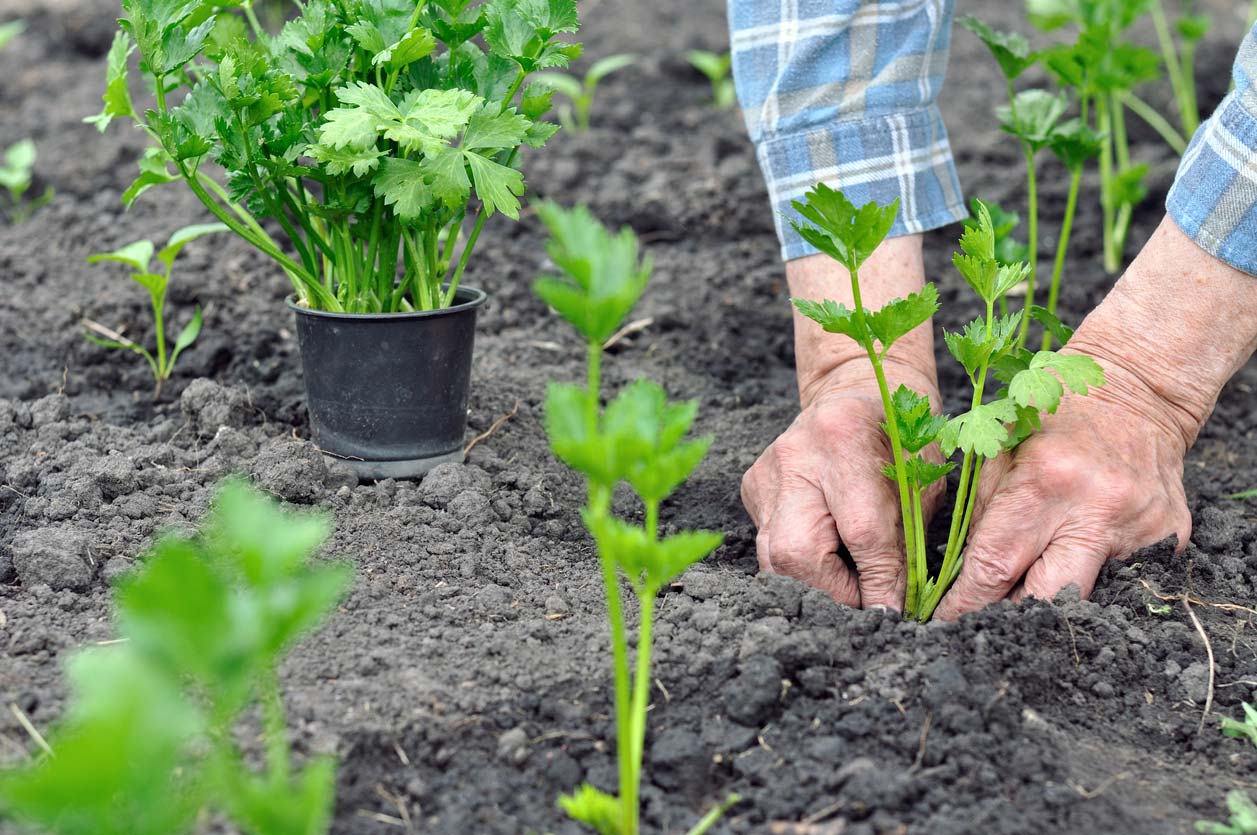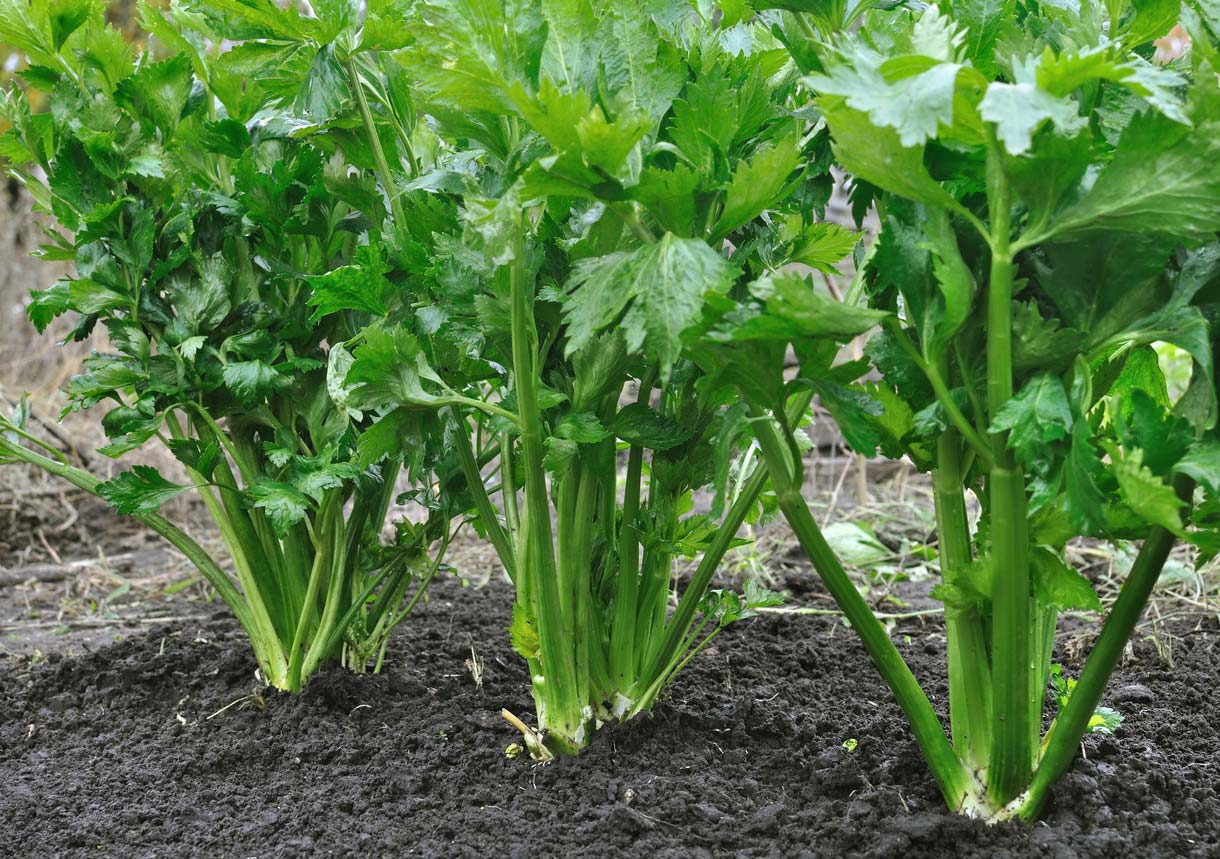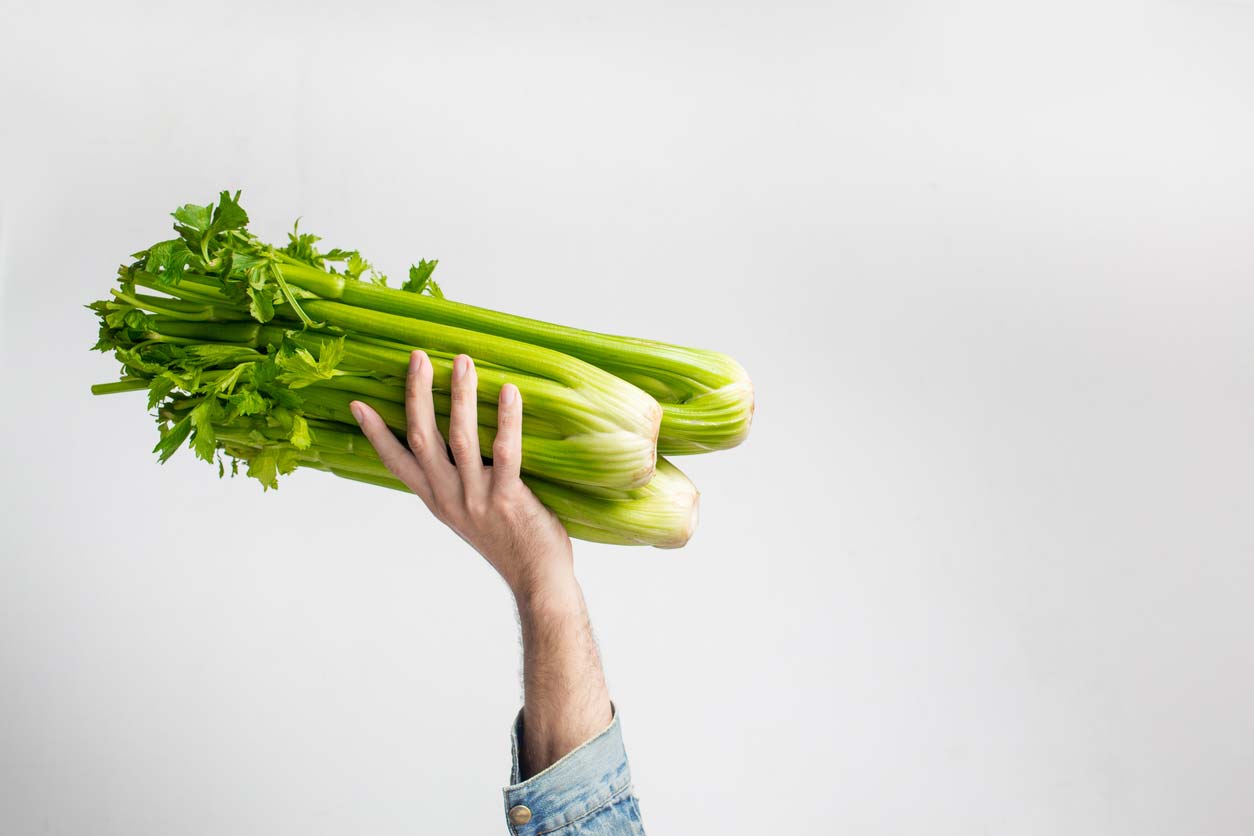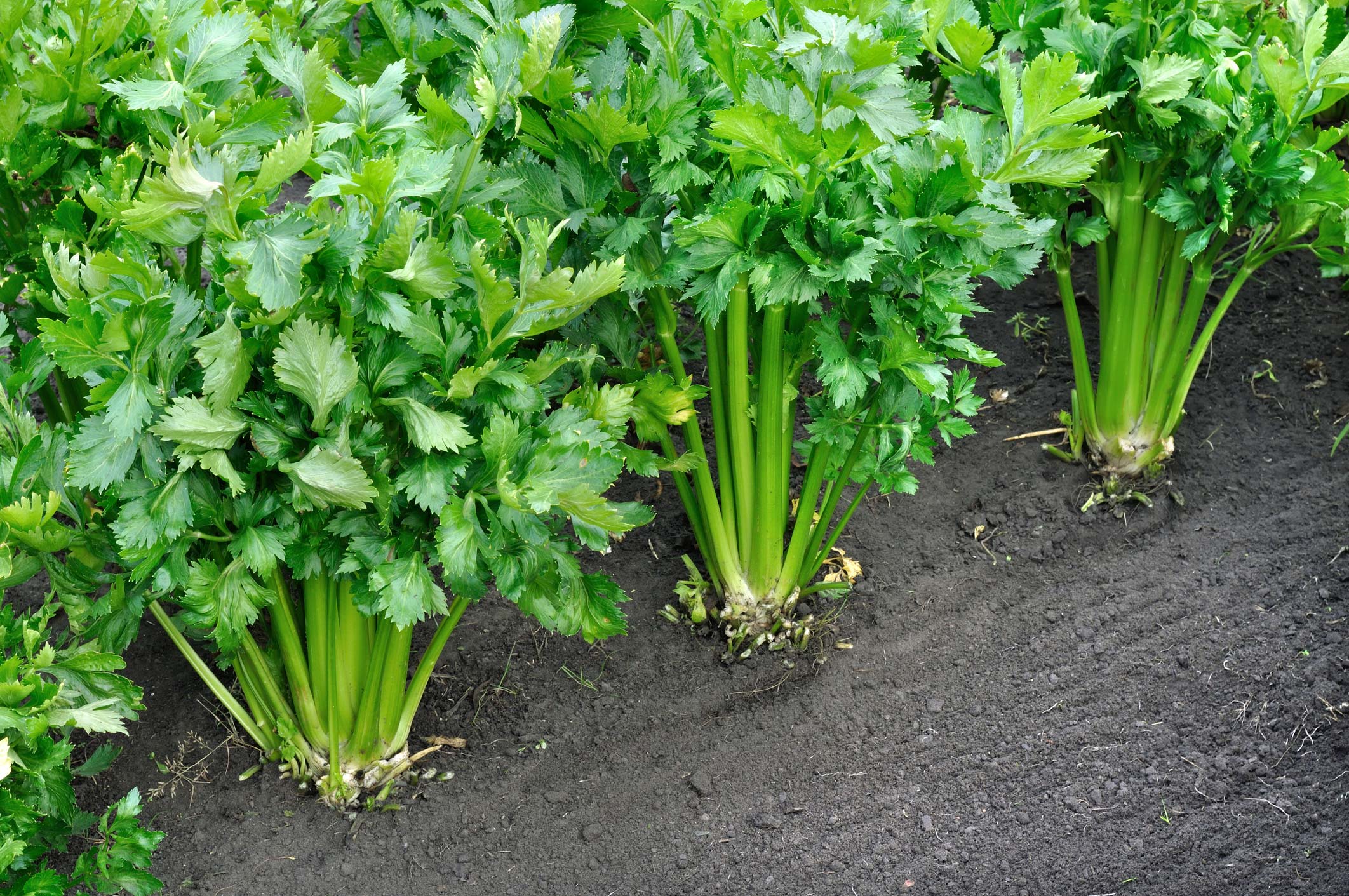Celery, also known as Apium Graveolens, is a biennial plant that enjoys a long growing season. It’s a staple in cuisines around the world, providing flavor and crunch to recipes. Although it’s mostly grown for its stalks, a related plant called celeriac is also used like a root vegetable.
But before it was a culinary staple, celery was used almost exclusively for medicinal purposes from 850 BC through the 17th century. A 2017 phytopharmacological review (study of medicine from plant sources) on celery confirms “…the Apium has emerged as a good source of medicine in treating various diseases.” From weight gain and skin conditions to rheumatic tendencies and chronic pulmonary catarrh (or “fibroid lung”), celery has proven to be a powerful plant for health. If you want to learn more about the health benefits of celery, click here.
Aside from all its health benefits, celery is a relatively easy plant to grow in many different climates. And it makes a great addition to a food garden, requiring very little space. If you’re interested in trying to grow celery, read on to discover the best reasons to grow it and the top tips for a successful growing season.
3 Reasons to Grow Your Own Celery

If you’re a fan of celery already, or want to add more of it into your diet for its health benefits, you may want to consider growing celery at home. One way to grow celery is from food scraps (you can find out how, here). But for the purposes of this article, we’ll be talking about growing celery from plants or seeds. Here are three great reasons to start growing your own celery.
1. Protect yourself from toxic chemicals.
Celery is ranked as one of the Dirty Dozen by the Environmental Working Group (EWG), making non-organic celery one of the most pesticide-contaminated produce items on grocery shelves. But when you grow your own, you know exactly what the plants were treated and grown with (or without). And you’re contributing to a toxic-free future for yourself and your loved ones.
2. Get more nutrients.
Your health starts in the soil. And growing your own food allows you to focus on quality soil, and therefore, a quality nutrient profile. Plus, food can start to decompose right after harvest. When buying celery from a grocery store or market, there’s no telling how much of those vital nutrients were lost before the food reaches your plate.
3. The flavor of homegrown celery will surprise and delight you!
It’s easy to overlook celery for flashier vegetables. But homegrown celery is so much more fragrant than store-bought. You’ll quickly discover why it’s been in recipes for thousands of years, not just for its health and medicinal benefits, but for its unique, sweet flavor.
A Note About Celery Plants vs Seeds

Growing celery from seeds is not recommended for beginners. Celery seeds are some of the more finicky seeds and take longer than most to germinate. When you find good, quality celery plants at a trusted nursery or farmers market, you will have more success and faster harvests.
However, if you can’t find celery plants or want to try your hand at growing from seed, that’s always still an option. When growing from seeds, you may want to start the seeds indoors about 10-12 weeks before the first frost for a fall harvest, and before the last frost date for a spring harvest. For the exact growing dates for your location and climate, use a planting calendar.
Top Tips for Growing Celery

When inviting plants into your life, it’s important to remember that plants want to thrive. They do whatever it takes to grow strong and turn to seed for the next generation of plants. Your role as a steward is to provide the best conditions for your plants to flourish. Nevertheless, in order for your celery to thrive, these are some of the top tips to consider.
1. Growing celery is great for people with busy lives.
Celery is one of the easiest plants to grow in a vegetable and herb garden. Once you start your garden, it takes just minutes each day to harvest and care for celery. Maintenance includes making sure the planting area is free of weeds and tending to any pests. Luckily, most pests avoid this fragrant herb, making it easy to care for too. If you do encounter any pests, you can find out non-pesticidal management strategies from the University of California’s Agriculture and Natural Resources department.
2. There IS a celery variety for your climate & taste.
Plant your celery outside once night temperatures are above 55°F (12°C). Celery grows best in temperatures between 55-80°F (12-26°C). Living in a hot, dry desert climate? You’ll have better success planting in dappled shade or under shade cloth.
A favorite among many gardeners is the Tango celery variety. It performs well under less than ideal growing conditions such as heat and moisture stress. And the flavor is fragrant with stalks that are more tender and less fibrous.
What other varieties are there to consider? Tall Utah is an upright celery plant, rather than one that spreads out. And Giant Red or Chinese Pink varieties are a fun way to add some unusual color to your meals.
Especially if you’re growing in a hot climate, you may want to consider the blanching technique to avoid celery that’s too bitter. Blanching involves covering up parts of the plant to prevent photosynthesis to control the flavor profile. Note: Blanching celery will give it a paler color and will also reduce the nutrients, so it’s not ideal in that sense. But there are also self-blanching varieties of celery that don’t require any extra work to keep them tasting sweet.
3. Your celery plants want 6-8 hours of sunlight.
Without proper sunlight, none of your vegetable plants will be able to photosynthesize and grow. Celery grown outdoors needs six hours of sunlight minimum. Note: Sunlight and grow lamps are not the same thing. When growing indoors, your celery plants will need around 16 hours under grow lamps.
4. Quality soil means nutrient-rich food.
Soil health is an important element when growing celery. If growing in a container, choose a high quality, organic potting mix. If growing directly in soil, ensure good drainage, structure, and fertility. Celery thrives in soil with a pH between 5.8 and 6.8. It also enjoys compost-enriched soil, so you’ll need to add a 2” layer minimum of organic compost on the top of your potting mix or soil each growing season.
5. Getting more out of your space.
Celery is perfect for small gardens. While planting celery 6” (15cm) apart is recommended, squeezing that spacing to 4” has some benefits. It may lower your harvest per plant, but you’ll get more harvest overall since you have additional plants. This is a great option for people with small growing spaces.
For container gardens, choose a container that is 12” (30cm) wide and at least 12” (30cm) deep for four celery plants or cutting celery clusters. This will give a family of four several celery stalks for around two meals daily.
6. Water, water, and more water!
Celery is 95% water by weight, and needs more water than most vegetables. It’s a marshland plant, so it prefers consistent moisture. That means you’ll need to water it each day (for temperatures reaching above 70° F) or every other day (for temperatures averaging below 70° F).
How do you know if you need more water? If your celery plants wilt, water more. Watering celery once a week typically doesn’t work unless you get significant condensation every night (or frequent rainfall) in your garden.
And if you’re living in a hot, dry desert climate, add 6” of mulch to the soil. Doing so can drop the soil temperature by 10° F! The soil will hold more moisture, which will keep roots cooler.
7. How to harvest celery for maximum yield.
You might have read elsewhere that it takes celery 60-80 days before it’s ready for harvest. If you were growing a head of celery like you find at the grocery store, that might be true. But the good news is you can harvest much sooner with this PRO tip!
PRO Tip for more abundant celery harvests: Cut what you need, when you need it. When the plant has at least 10 stalks, no matter how small they are, start harvesting and enjoying your celery. Simply harvest the outermost stalks and keep at least seven stalks on the cluster at all times. Your plants may last the entire growing season with this continuous harvest method. That’s WAY better than waiting for one single head of celery!
To harvest, use a sharp knife or pair of scissors to remove each outermost stalk as close to the soil as possible. Keep the cuts as clean as possible as old plant material and ragged cuts are places for pests and diseases to fester.
8. Can you store celery for later?
Like most herbs or above-ground vegetables, it’s best to cut and use celery fresh. After all, that’s the benefit of having a garden — putting the absolute freshest food on your plate at each meal! But if you are harvesting a lot of celery at once, water is the trick to keeping celery fresh. One option is to place stalks in a glass of water on the counter. Display the vibrant green harvest while keeping it hydrated until you’re ready to use.
If you are considering preserving celery for all your winter soups, use a dehydrator to remove most of the moisture for long term storage. Pro tip: Grind your dehydrated celery into a powder and store in an airtight container in a dark cool space to enjoy your harvests year-round.
Get Growing!

Celery is a worthwhile crop to add to your food garden rotation. It’s good for your health and can be grown from either seeds or plants. If you want even more detailed tips and information on how to grow celery, you can get the complimentary Grow Your Own Celery – Cheat Sheet from our friends over at Grow Your Own Vegetables. It has everything you need to grow celery in a one-page printable format. Happy growing!
Tell us in the comments:
- Have you ever grown celery before?
- What are your favorite celery varieties?
Feature image: iStock.com/YuriyS




